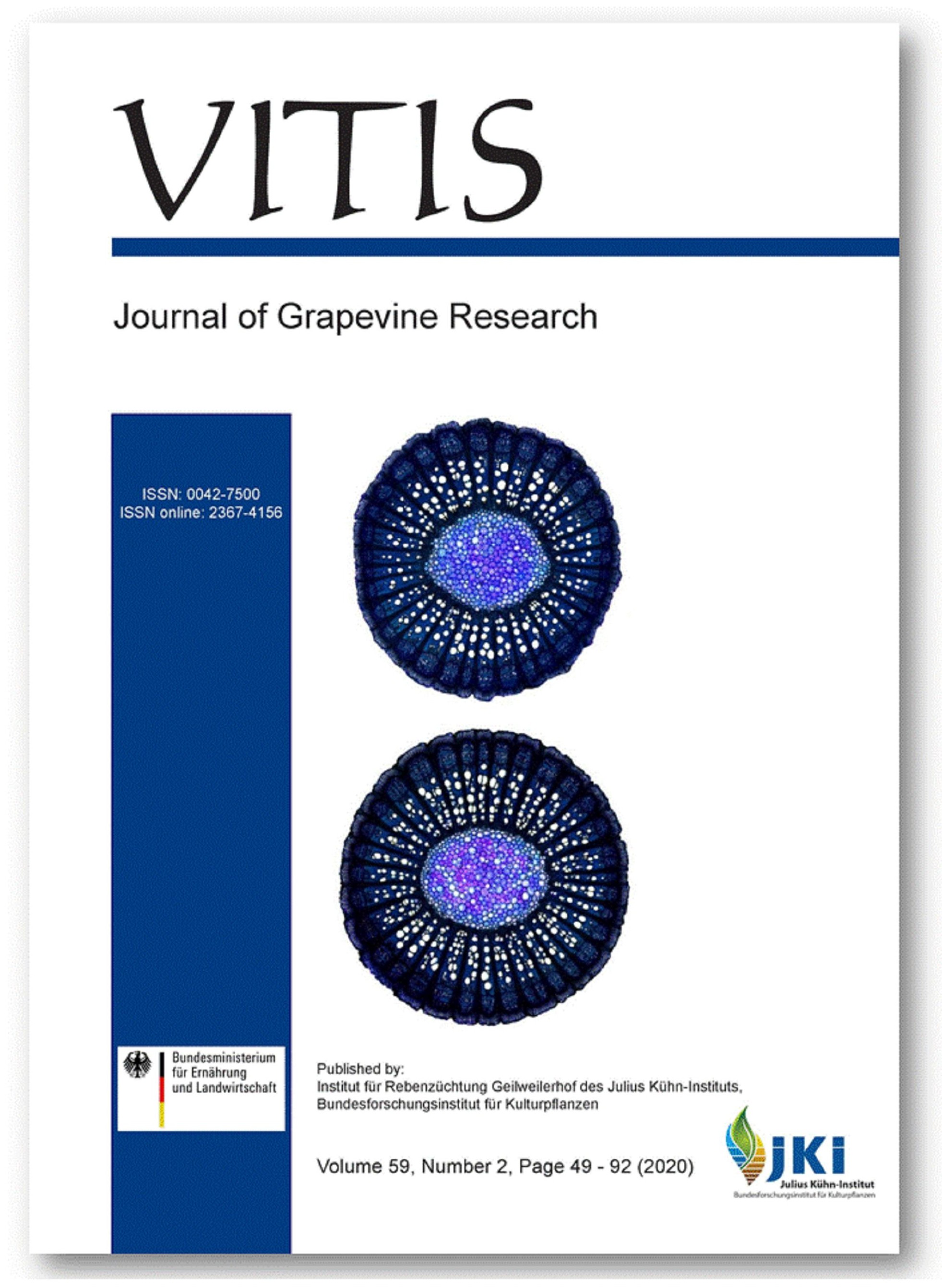Contrasting adaptation of xylem to dehydration in two Vitis vinifera L. sub-species
DOI:
https://doi.org/10.5073/vitis.2020.59.53-61Keywords:
center of domestication; drought resistance; grapevine; hydraulic conductivity; Vitis vinifera; vulnerability curve; wine; xylem.Abstract
Xylem hydraulic properties of agricultural crop species can be linked to their region of origin, but because crop systems are often irrigated to reach optimum quality and yield, key differences in drought resistance are not often considered. We investigated how hydraulic conductivity and xylem vulnerability to drought-induced cavitation of two grapevine cultivars correspond to their centers of domestication with 'Merlot' (Vitis vinifera subspecies occidentalis) having been domesticated in a temperate forest region, and 'Thompson Seedless' (Vitis vinifera subspecies orientalis) domesticated in a semi-arid region. We used anatomical measurements and xylem vulnerability curves to evaluate hydraulic traits and drought resistance. Our results showed that 'Thompson Seedless' was significantly more vulnerable to drought-induced cavitation than 'Merlot'. Bench dehydration produced significantly different estimations of xylem vulnerability to cavitation in each cultivar. This result was consistent with anatomical measurement, with 'Thompson Seedless' stems having greater maximum stem-specific hydraulic conductivity, more vessels, higher vessel density and a greater lumen fraction than 'Merlot'. The relatively large amount of xylem vessels and lumen area in 'Thompson Seedless' is consistent with domestication in a semi-arid habitat where a greater number and size diversity of xylem vessels would be needed to transport water and meet evaporative demand as opposed to cultivars that were domesticated in temperate forest regions like 'Merlot'. These differences appear to expose 'Thompson Seedless' to high xylem vulnerability to cavitation.
Downloads
Published
Issue
Section
License
The content of VITIS is published under a Creative Commons Attribution 4.0 license. Any user is free to share and adapt (remix, transform, build upon) the content as long as the original publication is attributed (authors, title, year, journal, issue, pages) and any changes to the original are clearly labeled. We do not prohibit or charge a fee for reuse of published content. The use of general descriptive names, trade names, trademarks, and so forth in any publication herein, even if not specifically indicated, does not imply that these names are not protected by the relevant laws and regulations. The submitting author agrees to these terms on behalf of all co-authors when submitting a manuscript. Please be aware that this license cannot be revoked. All authors retain the copyright on their work and are able to enter into separate, additional contractual arrangements.



